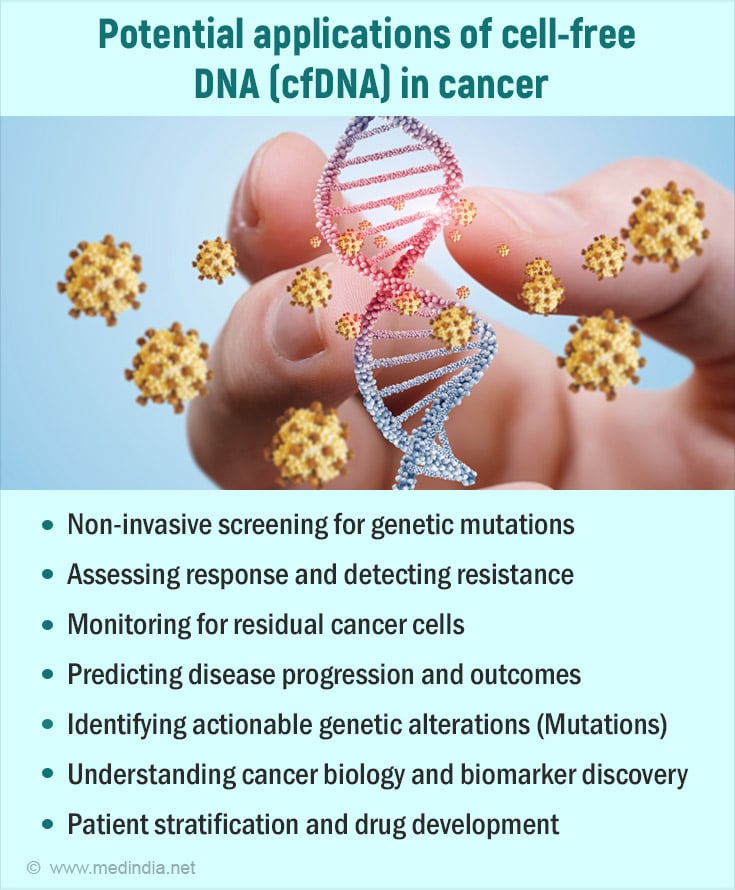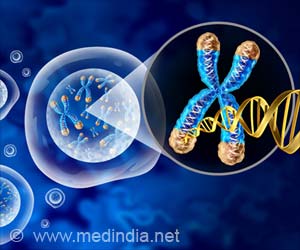- Cell-Free DNA: Hope and Potential Application in Cancer - (https://www.ncbi.nlm.nih.gov/pmc/articles/PMC7938321/)
About
Cell-free DNA (cfDNA) refers to fragments of DNA circulating in the bloodstream that originate from various sources, including dead or dying cells. In recent years, cfDNA has emerged as a promising tool in cancer diagnosis, monitoring, and treatment due to its minimally invasive nature and ability to provide valuable insights into the tumor(1✔ ✔Trusted Source
Cell-Free DNA: Hope and Potential Application in Cancer
Go to source).
Did You Know?
cfDNA can detect cancer mutations in the bloodstream, enabling early diagnosis and personalized treatment.cfDNA in Cancer Detection
Early Detection: cfDNA analysis holds promise for the early detection of cancer. Studies have shown that the level and mutational profile of cfDNA can differ between healthy individuals and cancer patients.This difference can be identified even in the early stages of the disease when traditional methods may not be sensitive enough. For instance, cfDNA analysis has been used to screen for asymptomatic early-stage nasopharyngeal carcinoma caused by Epstein-Barr virus (EBV).
Non-invasive Approach: A significant advantage of cfDNA analysis is that it is a non-invasive approach compared to traditional methods like biopsies. This eliminates the risks associated with surgical procedures and allows for more frequent monitoring of the disease.
Monitoring Treatment Response: cfDNA analysis can be used to monitor a patient's response to cancer treatment.By tracking changes in the level and mutational profile of cfDNA over time, doctors can assess the effectiveness of therapy and identify potential resistance mechanisms.For example,increased ctDNA levels following treatment might indicate progressive disease or the emergence of drug-resistant cells.
Early Detection of Relapse: cfDNA analysis can also be used for early detection of relapse.A rise in cfDNA levels after successful treatment may indicate the return of cancer, allowing for early intervention and potentially improving patient outcomes.
Size and Stage of Tumors: Blood levels of ctDNA correlate with tumor size and stage. Advanced tumors (stage IV) show 100–1,000 ctDNA copies per 5 mL of blood, while early-stage cancers show only 10 copies).
Metastatic Tumors: Higher ctDNA levels in metastatic tumors. Relapsed high-grade serous ovarian carcinoma shows an increase of six ctDNA copies per mL blood for an additional 1 cm³ of tumor.

Potential Applications in Different Cancers
Colorectal Cancer: KRAS mutations can be identified using cfDNA in colorectal cancer patients. The presence of these mutations can aid in diagnosis and guide treatment decisions.
Breast Cancer: Monitoring ESR1 mutations in cfDNA can be helpful in understanding a patient's response to hormone therapy and predicting the development of resistance.
Lung Cancer: The level of cfDNA can be used to assess the outcome of treatment with EGFR inhibitors in patients with non-small cell lung cancer (NSCLC).
Hepatocellular Carcinoma: Analysis of cfDNA methylation patterns can be used to diagnose and monitor hepatocellular carcinoma (HCC).Additionally, the level of cfDNA can be used to assess a patient's prognosis.
Other Cancers: cfDNA analysis is being explored for potential application in various other cancers, including pancreatic cancer, prostate cancer, and cervical cancer.
Challenges and Future Directions
Despite its promising potential, cfDNA analysis also faces certain challenges such as:
Standardization: Standardization of cfDNA isolation and analysis methods is crucial for ensuring reliable and comparable results across different laboratories.
Low Abundance: The amount of ctDNA in the bloodstream can be very low, particularly in early-stage cancers. This necessitates the development of more sensitive detection techniques.
Data Interpretation: Interpreting the complex data generated from cfDNA analysis requires ongoing research to understand how ctDNA mutations and methylation patterns correlate with specific cancer types and treatment responses.
In conclusion, cfDNA analysis is a rapidly evolving field with the potential to revolutionize cancer diagnosis, treatment monitoring, and personalized medicine. As research continues to address the existing challenges and explore new applications, cfDNA analysis holds immense promise for improving patient outcomes and the overall fight against cancer.











